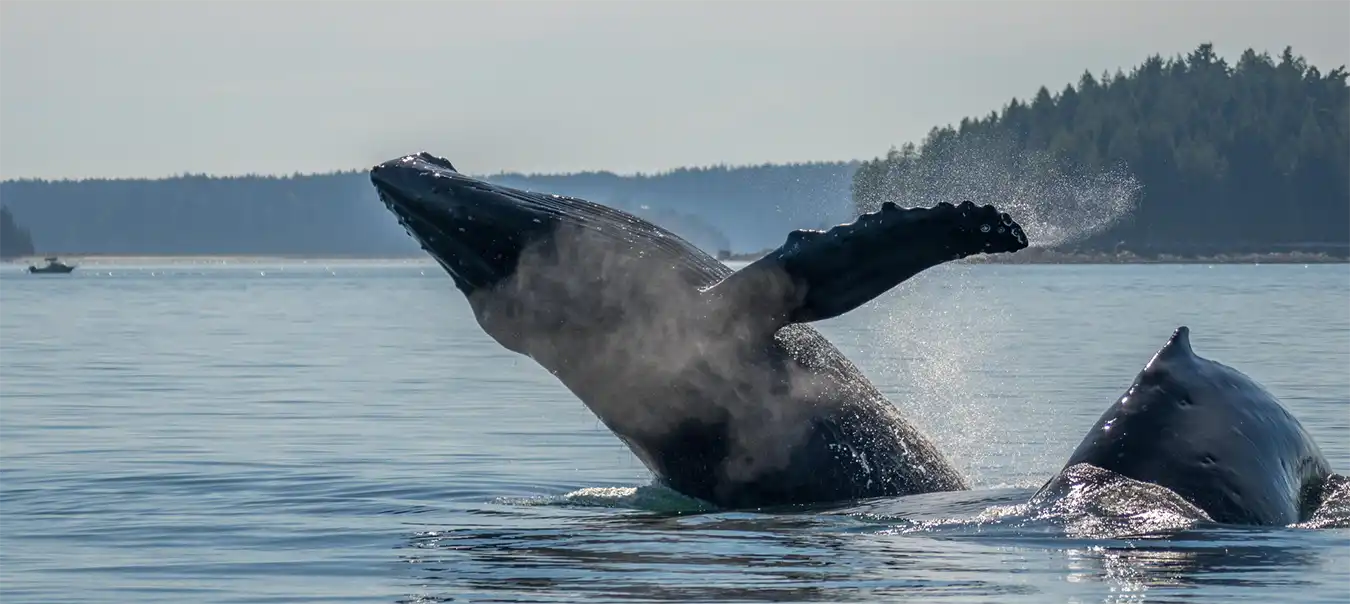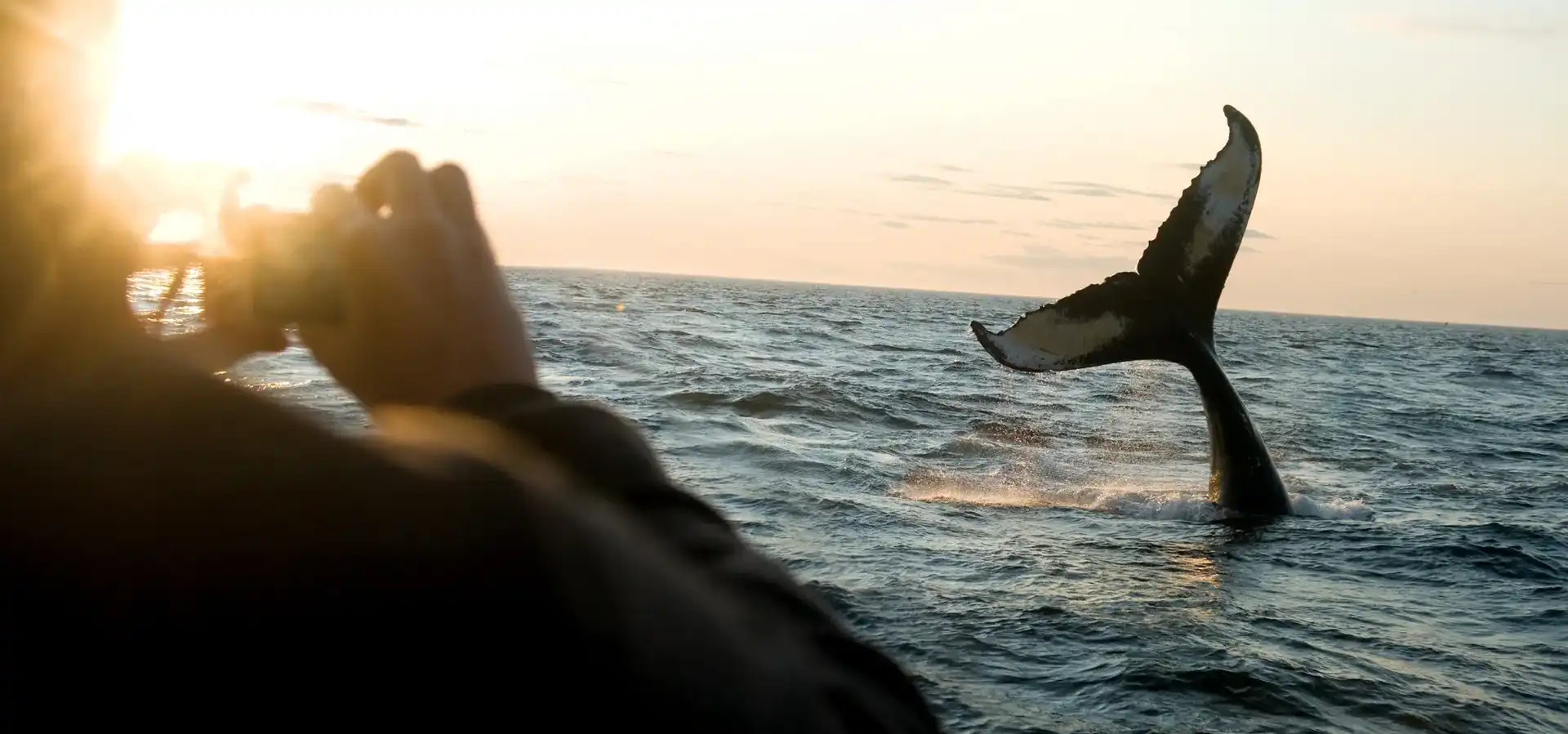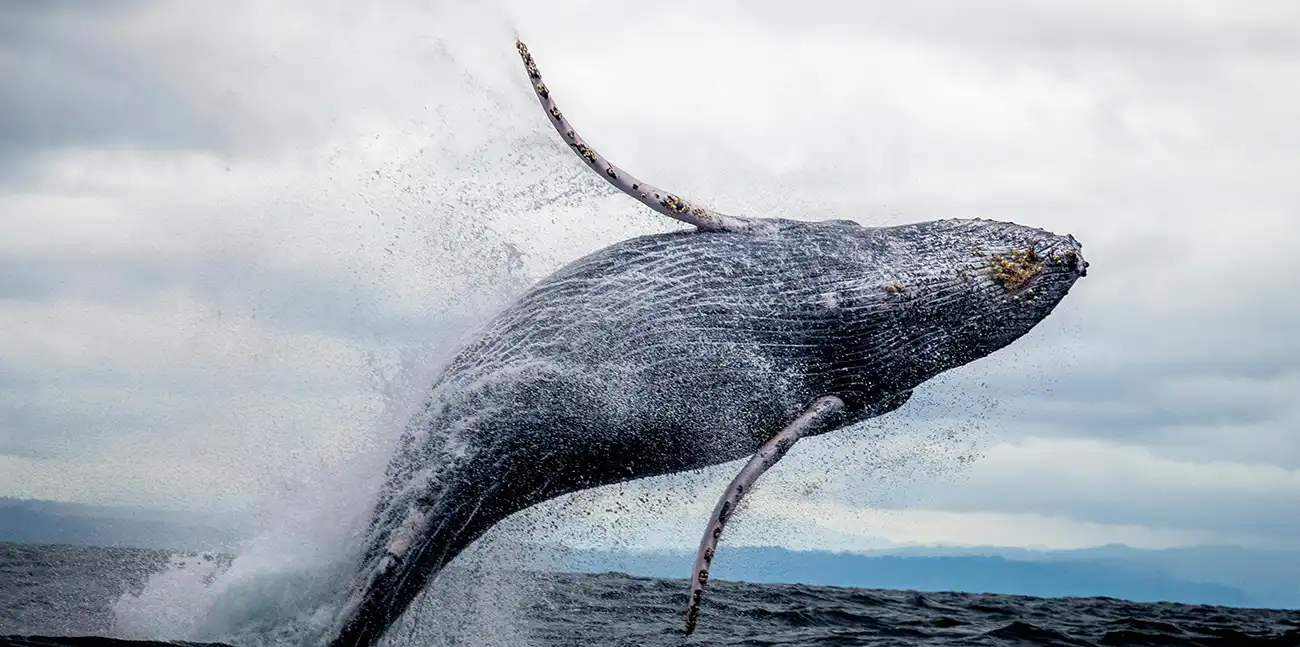Whale Watching in Canada: Top Spots to Visit
Canada is a haven for nature enthusiasts, and if you’re dreaming of witnessing the majestic beauty of whales, you’re in luck. The country’s vast coastline offers numerous prime spots where whale sightings are frequent and spectacular. Let’s dive into some of the best coastal locations in Canada where you can experience unforgettable whale watching adventures.
Vancouver Island, British Columbia
Vancouver Island is a top destination for whale watching in Canada, and for good reason. The island’s rugged coastline and rich marine life make it a hotspot for orca, humpback, and gray whale sightings. Imagine standing on the shore, feeling the cool ocean breeze, and spotting a pod of orcas gracefully gliding through the water. Orcas, also known as killer whales, are a common sight here, especially around the southern tip near Victoria. If you’re lucky, you might even see them breaching and playing, a truly mesmerizing sight.
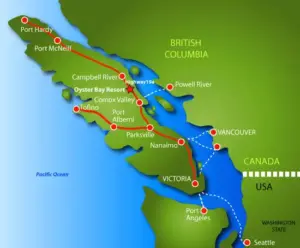 In addition to orcas, you can also witness the majestic humpback whales, known for their acrobatic breaches and soulful songs. The best time to see these gentle giants is from May to October when they migrate to the island’s waters to feed. And don’t forget the gray whales, which pass by the island during their long migration from Mexico to the Arctic. With numerous whale watching tours departing from towns like Tofino and Ucluelet, you’re sure to have an unforgettable experience.
In addition to orcas, you can also witness the majestic humpback whales, known for their acrobatic breaches and soulful songs. The best time to see these gentle giants is from May to October when they migrate to the island’s waters to feed. And don’t forget the gray whales, which pass by the island during their long migration from Mexico to the Arctic. With numerous whale watching tours departing from towns like Tofino and Ucluelet, you’re sure to have an unforgettable experience.
Bay of Fundy, New Brunswick and Nova Scotia
The Bay of Fundy, nestled between New Brunswick and Nova Scotia, is renowned for having the highest tides in the world. This unique phenomenon creates an ideal environment for whale watching in Canada. The nutrient-rich waters attract a variety of whale species, making it one of the best places to see these magnificent creatures up close. The bay is famous for its large population of humpback whales, which you can often see feeding and frolicking in the waves.
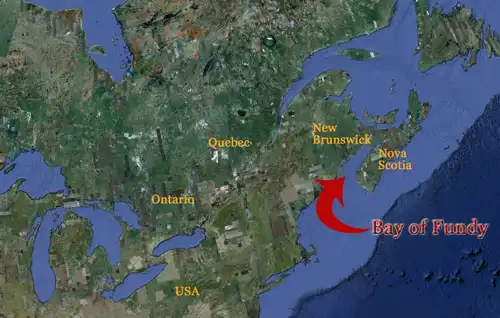 The Bay of Fundy is also one of the few places where you can spot the rare and endangered North Atlantic right whale. With a population of fewer than 400 individuals, seeing one of these whales is a rare and special experience. The best time to visit the Bay of Fundy for whale watching is between June and October. Various tours operate from charming coastal towns like St. Andrews and Digby, offering you the chance to witness these incredible animals in their natural habitat.
The Bay of Fundy is also one of the few places where you can spot the rare and endangered North Atlantic right whale. With a population of fewer than 400 individuals, seeing one of these whales is a rare and special experience. The best time to visit the Bay of Fundy for whale watching is between June and October. Various tours operate from charming coastal towns like St. Andrews and Digby, offering you the chance to witness these incredible animals in their natural habitat.
Tadoussac, Quebec
Tadoussac, located at the confluence of the Saguenay and St. Lawrence rivers, is a picturesque village that’s also a premier destination for whale watching in Canada. The area’s unique geography creates a rich feeding ground for a variety of whale species, including the iconic blue whale. Blue whales, the largest animals on the planet, can often be seen in these waters, making Tadoussac a must-visit for any whale enthusiast.
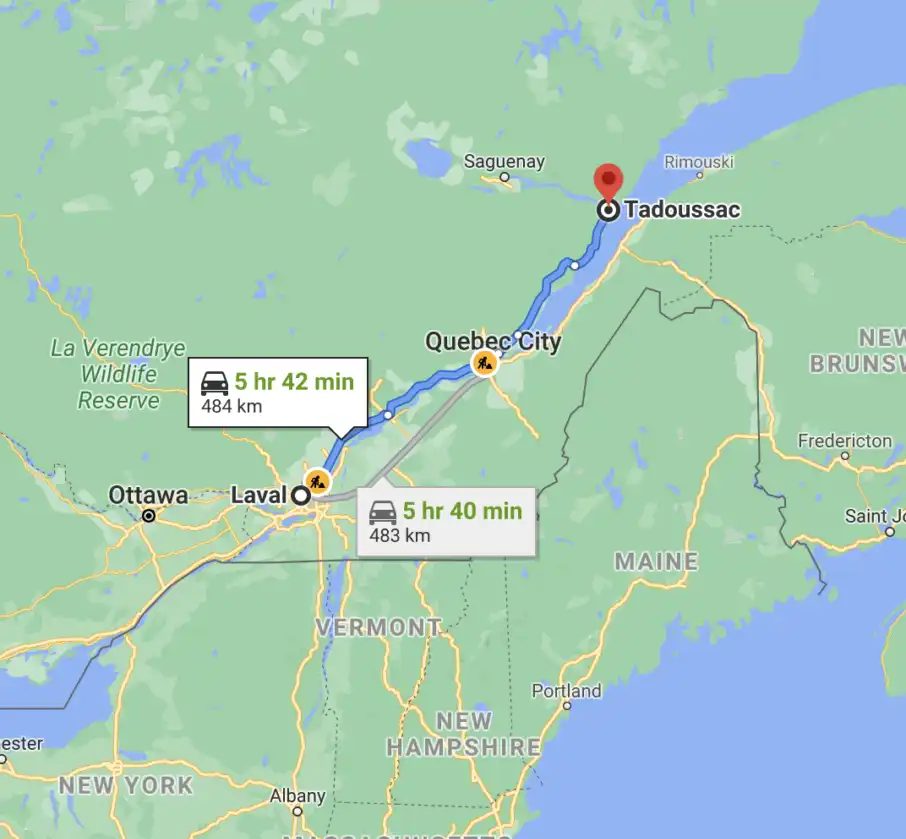 In addition to blue whales, you can also spot beluga whales, which are a rare treat in the wild. The belugas’ distinctive white color and playful behavior make them a favorite among visitors. The best time to see whales in Tadoussac is from May to October, when the whales migrate to the area to feed on the abundant krill and small fish. Numerous boat tours and even kayaking adventures are available, giving you plenty of options to get up close and personal with these magnificent creatures.
In addition to blue whales, you can also spot beluga whales, which are a rare treat in the wild. The belugas’ distinctive white color and playful behavior make them a favorite among visitors. The best time to see whales in Tadoussac is from May to October, when the whales migrate to the area to feed on the abundant krill and small fish. Numerous boat tours and even kayaking adventures are available, giving you plenty of options to get up close and personal with these magnificent creatures.
Newfoundland and Labrador
Newfoundland and Labrador offer some of the most breathtaking whale watching opportunities in Canada. The province’s extensive coastline provides numerous vantage points for spotting a variety of whale species, including humpbacks, orcas, and minke whales. One of the most popular spots is the Witless Bay Ecological Reserve, where you can see thousands of puffins alongside the majestic whales.
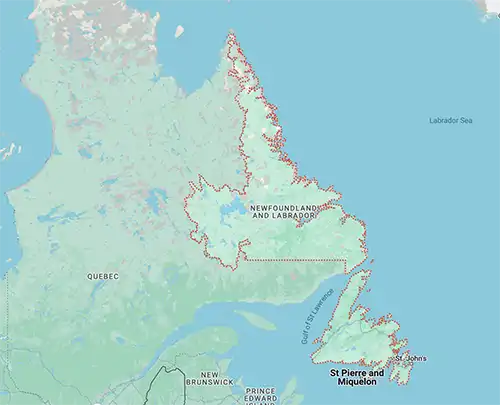 From late spring to early fall, the waters around Newfoundland and Labrador are teeming with life, as whales migrate to feed in the rich North Atlantic waters. Boat tours depart from many coastal communities, offering you a front-row seat to the spectacular marine wildlife. Don’t forget to visit Iceberg Alley, where you can see massive icebergs drifting south from Greenland, often accompanied by whales swimming nearby. It’s a truly unique experience that combines the beauty of ice and marine life.
From late spring to early fall, the waters around Newfoundland and Labrador are teeming with life, as whales migrate to feed in the rich North Atlantic waters. Boat tours depart from many coastal communities, offering you a front-row seat to the spectacular marine wildlife. Don’t forget to visit Iceberg Alley, where you can see massive icebergs drifting south from Greenland, often accompanied by whales swimming nearby. It’s a truly unique experience that combines the beauty of ice and marine life.
Seasonal Highlights for Whale Watching in Canada
Whale watching in Canada is a thrilling adventure, but knowing the best times to go can make your experience even more spectacular. Each season offers unique opportunities to witness these magnificent marine giants. Let’s explore the seasonal highlights and discover the best times of year to embark on your whale watching journey in Canada.
Spring Awakening: March to May
Spring is a magical time to go whale watching in Canada as the oceans come alive with activity. During these months, many whale species begin their migration, making it an ideal time for sightings. For example, on Vancouver Island, you can witness the return of the gray whales. These gentle giants travel from the warm lagoons of Mexico to their feeding grounds in the Arctic, passing by the island’s coastline. You might even see mothers with their calves, creating heartwarming moments that you’ll cherish forever.
In the Bay of Fundy, spring is the beginning of the whale watching season, with humpback and minke whales starting to make their appearance. As the waters warm up, the whales come to feed on the abundant krill and small fish. Spring is also a great time to avoid the summer crowds, giving you a more intimate and peaceful whale watching experience. Plus, the weather is mild and the landscapes are blooming with fresh greenery, adding to the overall charm of your adventure.
Summer Splendor: June to August
Summer is the peak season for whale watching in Canada, offering the best chances to see a wide variety of whale species. The warm weather and calm seas make it a perfect time to be out on the water. On the east coast, particularly in Newfoundland and Labrador, you can witness the incredible sight of humpback whales breaching and feeding. These playful giants are often accompanied by dolphins and seabirds, creating a vibrant and lively scene.
In Quebec’s Tadoussac region, summer is the prime time to spot blue whales, the largest animals on the planet. These majestic creatures migrate to the St. Lawrence River to feed, and their sheer size will leave you in awe. You’ll also have the chance to see beluga whales, which are present year-round but are more active during the summer months. The Bay of Fundy continues to be a hotspot for humpback whales, and the unique tidal phenomena add an extra layer of excitement to your trip.
Summer is also festival season in many coastal towns, where you can join in on whale-themed events and activities. It’s a fun way to learn more about marine life and conservation efforts while enjoying local culture and cuisine. Just remember to book your tours in advance, as summer is the busiest time for whale watching in Canada.
Fall Wonders: September to November
Fall is a fantastic time for whale watching in Canada, offering a blend of summer’s abundance and winter’s tranquility. As the summer crowds dwindle, you can enjoy a more relaxed and serene whale watching experience. In British Columbia, fall is an excellent time to see orcas, particularly around the southern tip of Vancouver Island. These intelligent and social whales are often seen hunting and playing, providing endless entertainment.
The Bay of Fundy remains a great spot for whale watching in the early fall, with humpback and minke whales still feeding in the nutrient-rich waters. The cooler weather brings crisp, clear days, making it easier to spot whales from both boats and shorelines. The vibrant fall foliage adds a stunning backdrop to your whale watching adventure, making it a feast for your eyes.
In Newfoundland and Labrador, the whale watching season extends into early fall, with humpbacks and orcas continuing their feeding frenzy. The cooler temperatures also mean fewer insects and more comfortable conditions for your outdoor excursions. Fall is a perfect time to combine whale watching with other activities like hiking and exploring the beautiful coastal landscapes.
Winter Whales: December to February
While winter might not be the first season that comes to mind for whale watching in Canada, it does offer unique opportunities. In British Columbia, particularly around Vancouver Island, you can still see orcas and occasionally humpback whales. The waters are less crowded, giving you a more exclusive and peaceful experience. Winter whale watching tours often provide warm beverages and blankets, ensuring you stay cozy while enjoying the spectacular marine life.
In Quebec, beluga whales are a year-round presence in the St. Lawrence River. These hardy creatures thrive in cold waters, and seeing them in a winter wonderland setting is truly magical. Although sightings might be less frequent compared to other seasons, the tranquility and beauty of winter whale watching make it a worthwhile experience.
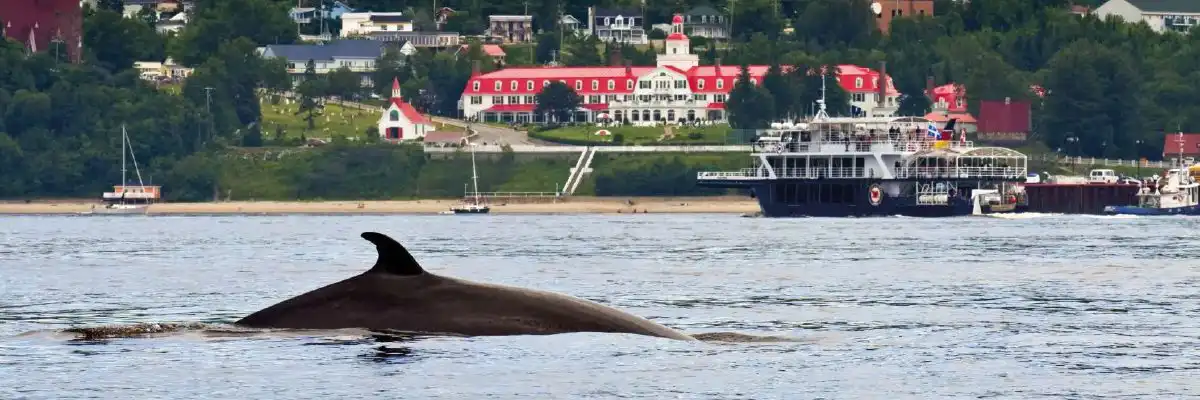
Local Marine Life: Discovering Canada’s Whales and More
When you embark on a whale watching adventure in Canada, you’re not just in for whale sightings. The country’s rich marine ecosystems are teeming with a diverse array of marine life waiting to be discovered. Let’s dive in and learn about the different whale species and other fascinating marine animals you might encounter on your Canadian whale watching journey.
Whales of Canada
1. Orcas (Killer Whales): These iconic black and white whales are a common sight along Canada’s west coast, particularly around Vancouver Island. Known for their intelligence and social behavior, orcas often travel in pods and can be seen hunting, playing, and breaching.

2. Humpback Whales: With their distinctive knobby heads and long flippers, humpback whales are a favorite among whale watchers. They frequent the waters of British Columbia and the Bay of Fundy, where they come to feed during the summer months.
3. Gray Whales: Named for their mottled gray coloration, gray whales are known for their long migrations between their breeding grounds in Mexico and their feeding grounds in the Arctic. Vancouver Island is a prime spot to see these gentle giants during their spring migration.
4. Beluga Whales: These striking white whales can be found in the waters of the St. Lawrence River in Quebec. Belugas are known for their vocalizations and are often called the “canaries of the sea” due to the variety of sounds they make.
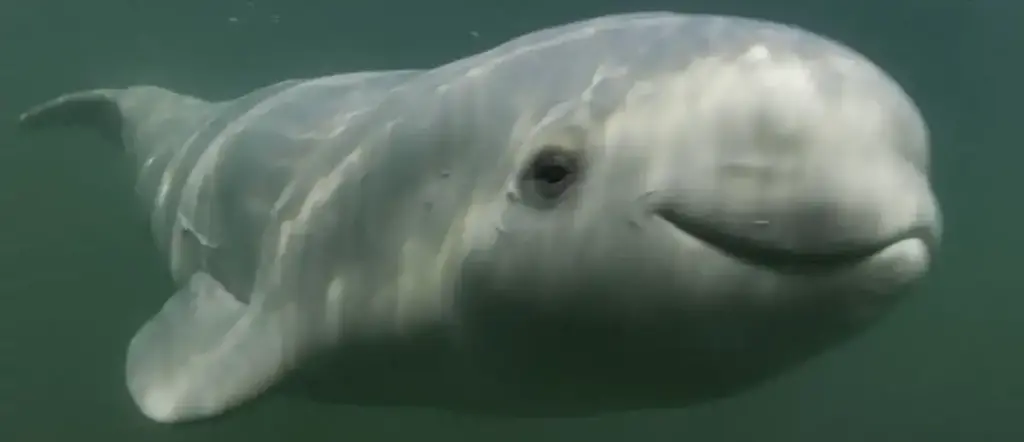
5. Blue Whales: The largest animals on the planet, blue whales can occasionally be seen in the waters off Quebec’s Tadoussac region. Spotting one of these majestic creatures is a rare and unforgettable experience.
Other Marine Marvels
1. Dolphins: Several species of dolphins can be found in Canadian waters, including Pacific white-sided dolphins and Atlantic white-sided dolphins. These playful creatures often ride the bow waves of boats, delighting passengers with their acrobatic displays.
2. Seals and Sea Lions: Canada’s coasts are home to a variety of seals and sea lions, including harbor seals, gray seals, and Steller sea lions. You might spot them lounging on rocky shores or swimming gracefully through the water.
3. Porpoises: Porpoises are small cetaceans that resemble dolphins but have a more robust body shape and lack a prominent beak. In Canada, you may encounter harbor porpoises and Dall’s porpoises darting through the waves.
4. Seabirds: Keep an eye out for seabirds like puffins, gulls, and shearwaters soaring overhead or diving into the water to catch fish. These birds play an essential role in marine ecosystems and add to the vibrant coastal scenery.
Conservation and Protection
As you marvel at Canada’s marine life, it’s essential to remember the importance of conservation and protection. Many whale species, including orcas and humpbacks, face threats such as habitat degradation, pollution, and entanglement in fishing gear. By supporting responsible whale watching practices and advocating for marine conservation efforts, you can help ensure that future generations can continue to enjoy these incredible creatures in their natural habitat.
Travel Tips and Safety for Whale Watching in Canada
Planning a whale watching trip in Canada? Here are some essential tips to ensure your adventure is safe and enjoyable. From what to pack to staying safe on the water, we’ve got you covered.
Packing Essentials
When preparing for your whale watching excursion, be sure to pack the essentials. Bring along layers of clothing, as the weather on the water can change quickly. Don’t forget your sunscreen and sunglasses to protect yourself from the sun’s rays. And of course, bring a camera or binoculars to capture those unforgettable whale sightings.
Choosing the Right Tour
When selecting a whale watching tour, do your research to find a reputable operator. Look for companies with experienced guides who prioritize safety and environmental responsibility. Check reviews and ask for recommendations from locals or fellow travelers to ensure you have the best possible experience.
Safety on the Water
Once you’re out on the water, it’s essential to prioritize safety. Listen to your guide’s instructions and follow any rules or regulations they provide. Stay seated while the boat is in motion and hold on to handrails or other secure fixtures to prevent falls. And always wear a life jacket, even if you’re a strong swimmer, as conditions on the water can change unexpectedly.
Avoiding Disturbances
When observing whales in their natural habitat, it’s crucial to minimize disturbances and respect their space. Keep a safe distance from the animals and avoid approaching them too closely. Never attempt to feed or touch the whales, as this can disrupt their behavior and stress them out. Remember, we’re visitors in their world, so let’s treat them with the respect they deserve.
Environmental Responsibility
As responsible travelers, it’s essential to minimize our impact on the environment while whale watching. Avoid using single-use plastics and dispose of any waste properly. Respect wildlife habitats and avoid disturbing nesting birds or other marine animals. And consider choosing eco-friendly tour operators that prioritize sustainable practices and support marine conservation efforts.
Weather Considerations
Before heading out on your whale watching adventure, keep an eye on the weather forecast. While operators will typically cancel tours in the event of severe weather, it’s essential to be prepared for changing conditions. Dress warmly and bring waterproof layers to stay comfortable, even if the weather turns wet or windy.
Stay Hydrated and Snack Smart
Whale watching can be an exhilarating experience, but it’s essential to stay hydrated and fueled throughout the day. Bring plenty of water to drink, especially if you’re out on the water for an extended period. Pack healthy snacks like fruit, nuts, or granola bars to keep your energy levels up and prevent hunger pangs.
Listen to Your Body
Finally, listen to your body and know your limits. If you start to feel seasick or unwell, let your guide know immediately. They can provide assistance or take you back to shore if necessary. Don’t push yourself to stay out on the water if you’re not feeling well, as it’s essential to prioritize your health and safety.
Whale watching in Canada is a magical experience that offers the chance to see these magnificent creatures in their natural habitat. Whether you choose the rugged coastline of Vancouver Island. The dramatic tides of the Bay of Fundy, the rich waters of Tadoussac. Or the expansive coast of Newfoundland and Labrador, you’re in for an unforgettable adventure. So pack your binoculars, bring your camera, and get ready for a once-in-a-lifetime experience that will leave you in awe of the natural world.
https://travel.my-ivvi.com/wp-content/uploads/sites/8/2024/05/pexels-daniel-ross-264888-804181-copy.webp
whale watching in Canada|Vancouver Island, British Columbia|bay of fundy|Tadoussac, Quebec|google-map-en copy|vancouver-island-map-bc copy|Tadoussac, Quebec|Newfoundland and Labrador|whale watching in Canada|whale watching in Canada – Orcas (Killer Whales)|whale watching in Canada – Beluga Whales
Exploring
adventure|canada|outdoor|tips|Travel|trip



